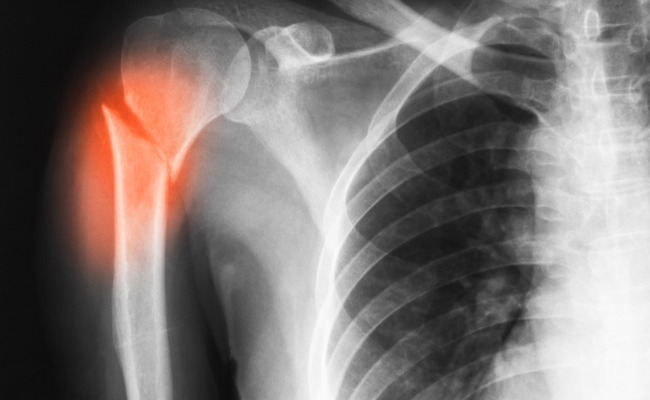How to Treat Comminuted Fracture?
- November 09, 2023
- No Comments

What is a Comminuted Fracture?
A comminuted fracture is a severe type of bone fracture that occurs when a bone breaks into multiple fragments or pieces. This is in contrast to a simple fracture, where the bone breaks into two pieces or a few large fragments. Comminuted fractures are often the result of high-energy trauma, such as car accidents, falls from heights, or sports injuries. These fractures can occur in any bone in the body, but they are more common in long bones, such as the femur, tibia, and humerus.
Why Comminuted Fractures Occur?
Comminuted fractures typically occur due to a significant force or impact on the bone. Several factors can contribute to the occurrence of comminuted fractures:
- Trauma: High-velocity accidents, such as car crashes or falls from great heights, can generate the force necessary to shatter a bone into multiple pieces.
- Sports Injuries: Athletes involved in contact sports or those at risk of high-impact collisions, like football or hockey, are more prone to comminuted fractures.
- Osteoporosis: Weakened bones due to conditions like osteoporosis can make bones more susceptible to breaking into multiple fragments with less force.
- Age: As individuals age, their bones may become more brittle, making them more vulnerable to comminuted fractures.
- Pathological Conditions: Tumors, infections, or other underlying medical conditions can weaken bones and increase the risk of comminuted fractures.
How to Diagnose Comminuted Fractures?
Diagnosing a comminuted fracture involves a combination of clinical evaluation and medical imaging. Healthcare professionals use various methods to determine the extent and severity of the fracture, including:
- Physical Examination: A physician will perform a physical examination to assess the injured area for deformities, swelling, and tenderness.
- X-rays: X-ray images are commonly used to visualize the fractured bone and assess the degree of fragmentation.
- CT Scans: Computed tomography (CT) scans provide detailed, three-dimensional images of the fracture, helping to identify smaller bone fragments and assess any associated injuries.
- MRI: Magnetic resonance imaging (MRI) can be useful for evaluating soft tissue injuries, as well as providing additional information about the fracture.
Treatment Solutions for Comminuted Fractures:
Treating comminuted fractures requires a multi-faceted approach that addresses both the bone and any associated soft tissue injuries. The choice of treatment depends on various factors, including the location and severity of the fracture, the patient's overall health, and their individual needs. Common treatment solutions include:
- Immobilization: In cases where the fracture is stable and there is minimal displacement of bone fragments, the affected limb may be immobilized using a cast or splint. This immobilization helps to stabilize the bone and promote natural healing.
- Open Reduction and Internal Fixation (ORIF): When a comminuted fracture involves significant displacement or multiple bone fragments, surgery may be necessary. During an ORIF procedure, the surgeon repositions the bone fragments and uses screws, plates, or rods to hold them in place, allowing for proper healing.
- External Fixation: In some complex cases, external fixation may be employed. This involves the use of pins or screws inserted into the bone, which are then connected to an external frame. The frame stabilizes the bone and allows for healing.
- Bone Grafting: In situations where there is significant bone loss due to comminuted fractures, a bone graft may be necessary to promote bone regeneration. Autografts (bone taken from the patient's own body) or allografts (donor bone) can be used in these cases.
- Physical Therapy: After the initial treatment, rehabilitation plays a critical role in restoring mobility and strength. Physical therapy helps patients regain their range of motion and build muscle around the injured area.
- Pain Management: Patients may require pain management to alleviate discomfort associated with the fracture and surgical procedures. This can involve the use of medications or other pain relief methods.
- Follow-up Care: Patients with comminuted fractures require ongoing follow-up care to monitor the healing process, remove hardware if necessary, and address any complications that may arise.
Benefits of Treating Comminuted Fractures:
Effectively treating comminuted fractures is crucial for several reasons:
- Improved Functionality: Proper treatment and rehabilitation can help restore the functionality of the affected limb or bone. This enables individuals to regain their independence and mobility.
- Reduced Pain and Discomfort: Treating comminuted fractures helps alleviate pain and discomfort, improving the patient's overall quality of life.
- Reduced Risk of Complications: Untreated or poorly managed comminuted fractures can lead to complications such as non-union (the bone doesn't heal), malunion (the bone heals in an incorrect position), or infection. Proper treatment minimizes these risks.
- Faster Recovery: Early and appropriate treatment leads to quicker recovery times, allowing patients to return to their regular activities sooner.
- Prevention of Long-Term Disability: Treating comminuted fractures effectively helps prevent long-term disability and complications that can impact a person's daily life.
- Improved Aesthetic Outcomes: Surgical interventions like ORIF and bone grafting can help restore the natural shape and appearance of the affected bone, minimizing deformities.
- Enhanced Quality of Life: Ultimately, treating comminuted fractures contributes to an improved quality of life, allowing individuals to lead a more active and pain-free existence.
Comments (0)